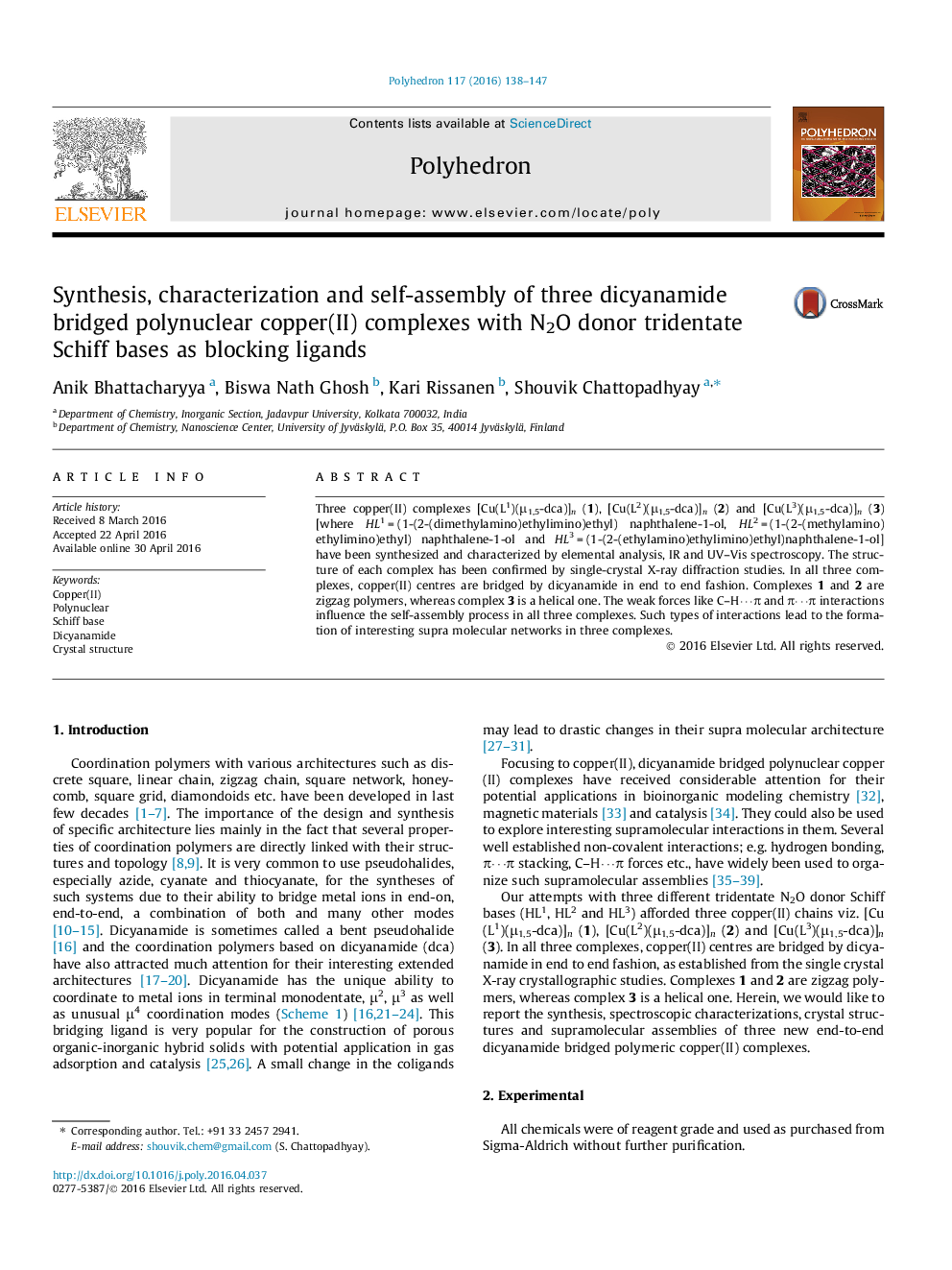| Article ID | Journal | Published Year | Pages | File Type |
|---|---|---|---|---|
| 1336191 | Polyhedron | 2016 | 10 Pages |
Three copper(II) complexes [Cu(L1)(μ1,5-dca)]n (1), [Cu(L2)(μ1,5-dca)]n (2) and [Cu(L3)(μ1,5-dca)]n (3) [where HL1 = (1-(2-(dimethylamino)ethylimino)ethyl) naphthalene-1-ol, HL2 = (1-(2-(methylamino)ethylimino)ethyl) naphthalene-1-ol and HL3 = (1-(2-(ethylamino)ethylimino)ethyl)naphthalene-1-ol] have been synthesized and characterized by elemental analysis, IR and UV–Vis spectroscopy. The structure of each complex has been confirmed by single-crystal X-ray diffraction studies. In all three complexes, copper(II) centres are bridged by dicyanamide in end to end fashion. Complexes 1 and 2 are zigzag polymers, whereas complex 3 is a helical one. The weak forces like C–H⋯π and π⋯π interactions influence the self-assembly process in all three complexes. Such types of interactions lead to the formation of interesting supra molecular networks in three complexes.
Graphical abstractThree polynuclear copper(II) complexes [Cu(L1)(μ1,5-dca)]n (1), [Cu(L2)(μ1,5-dca)]n (2) and [Cu(L3)(μ1,5-dca)]n (3) have been synthesized and characterized by elemental analysis, IR and UV–Vis spectroscopy. The structure of each complex has been confirmed by single-crystal X-ray diffraction studies. In all three complexes, copper(II) centres are bridged by dicyanamide in end to end fashion. The weak forces like C–H⋯π and π⋯π interactions influence the self-assembly process in all three complexes.Figure optionsDownload full-size imageDownload as PowerPoint slide
